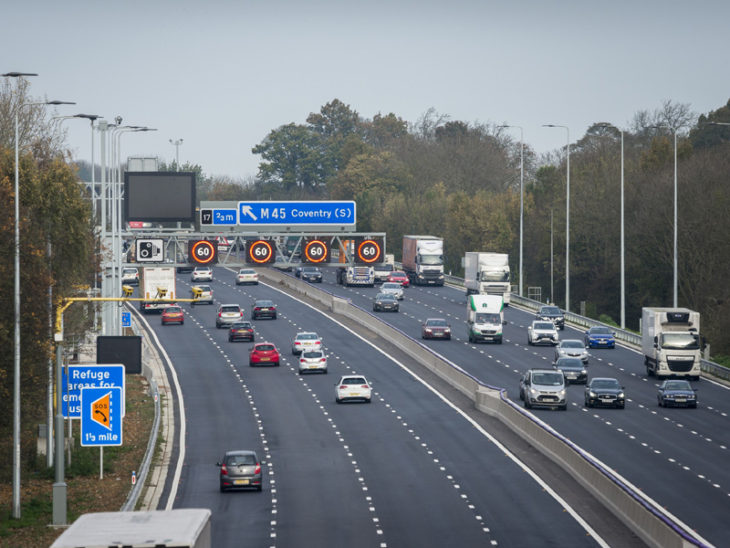Drivers breaking down in a live lane on an all-lane running (ALR) motorway face significantly higher dangers compared to a traditional motorway with a continuous hard shoulder, new research reveals.
The AA has discovered a report written by Highways England which finds that such breakdowns on ALR motorways (smart motorways where the hard shoulder has been permanently removed) more than triples the danger; according to Highways England’s work the risk increases by 216%.
Furthermore, the report, entitled Stationary Vehicle Detection and published in March 2016, shows it takes Highways England more than 17 minutes to spot a broken-down vehicle in a live lane on an all lane running motorway when Stationary Vehicle Detection (SVD) systems are not in place. And these real-time radar systems – which can detect stopped vehicles across multiple lanes in all weathers and set off an alarm for the control centre – are actually only in place on less than a fifth of all-lane running motorways, although they can detect breakdown live events on average 16 minutes quicker. One live lane breakdown on an ALR motorway without SVD took more than an hour to discover on CCTV.
The report also highlights that operation centres have a three-minute window to set signal changes, such as a red ‘X’ warning, once a vehicle has stopped in a live lane.
Edmund King, AA president, said: “Ultimately, until you are found by the camera you are a sitting duck.
“Taking three minutes to set the red ‘X’ is too long for someone in a broken-down vehicle to wait. Expecting someone to wait in a dangerous and life-threatening position for 20 minutes is simply inexcusable.
“The safer stationary vehicle detection technology should have been rolled out before any expansion of all-lane running was even considered. We are now three years on since their fully throated commitment to installing stopped vehicle detection to all schemes but only 24 miles has the system in place.”
The AA research also reveals that although Highways England has said all smart motorway schemes have full low-light CCTV coverage, motorway CCTV cameras only face one direction at a time – rendering them ineffective for breakdowns happening in the other direction.
King added: “This smoke and mirrors approach to the removal of the hard shoulder has gone on long enough. There have been too many incidents, too many near misses and too many excuses as to why promises have been bent or broken.
“We must stop removing the hard shoulder immediately and double the number of emergency refuge numbers already in place.”











































